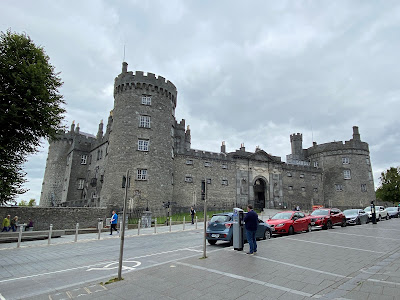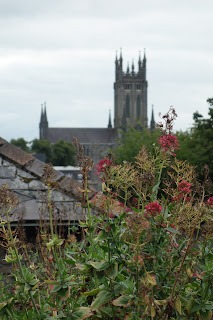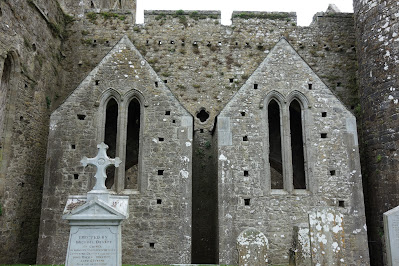Ireland, rightly named the "Emerald Isle" for it's beautiful lush green landscapes, was actually first endowed with the phrase in a 1875 poem, "When Erin First Rose", written by political activist William Drennan. Perhaps because green in my favorite color, the island has always whispered alluringly for me to come see for myself the two countries it encompasses. A good deal on flights spurred me to action and we decided to fly round-trip to Dublin on August 30, 2021, and departing on Monday, September 13. Circling the island on a two-week road-trip was a little reminiscent of our trip to New Zealand. Bob did all the harrowing driving - along winding stone-fenced narrow roads, lined with tall shrubbery and trees creating blind tunnel-like mazes to navigate. Around every corner, it seemed, we were head to head with an oncoming vehicle and had to suddenly halt and decide which vehicle would back up into the brush to allow the other to pass. And all this was done while driving a small tin-can of a car with steering and driving on the opposite side of our norms. White-knuckled and fearless, Bob took on the challenge like a champ, falling into bed every night completely exhausted! In retrospect, I should have been more aware of the toll my aggressive itinerary would mean for him. We stayed in a different location (primarily bed and breakfast guest homes) nearly every night. It was a whirlwind adventure that we look back on with awe, as we recognize how much we saw and did in those two glorious action-packed weeks in Ireland. Many, many thanks to my amazing travel partner, and best friend, Bob!
From the airport in Dublin, we immediately began our drive toward the Wicklow Mountains where we would find our lovely guesthouse alongside a river in the lush green hills and valleys at Glendalough. Ireland captivated us with it's beauty within the first hour of our journey. I was mesmerized by the ivy-covered houses, green rock-studded rolling hills, where manicured farmland lay like patchwork, lined by stone fences. Sheep meandered in the rocks and hills, and wildflowers grew profusely among the rocks. Stately pines forested hillsides, and lakes and rivers sparkled abundantly.
I think I could have spent a week in the Wicklow National Park, enjoying the many hikes and beautiful surroundings. But we had time for just one hike that evening. The trail took us through such a fairyland that I almost expected to see some pixies hiding beneath the mushroom apartment complex!
It was about an hour drive to reach Rock of Cashel, one of Ireland's most visited sites. It was the seat of the kings of Munster, an area in southwest Ireland established around the 1st century BC until 1118. It's kings were competitors for the High Kingship of Ireland. According to legend, St. Patrick himself came here to convert King Aenghus to Christianity. In 1101 the site was granted to the church and Cashel swiftly rose to prominence as one of the most significant centers of ecclesiastical power in the country. Cormac's Chapel contains the only surviving Romanesque frescoes in Ireland. In addition to Cashel's historical significance, I just love the beauty of the location and the magnificent ruins. I was touched by the beautiful cross which proclaims, "Thy will be done".
With another 1 1/2 hour drive to our final destination for the day, we turned south and headed toward the coast. We would spent the night at the colorful historic port and fishing town of Kinsale.




























































































No comments:
Post a Comment